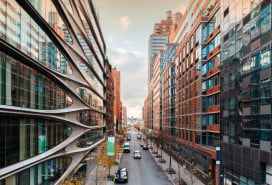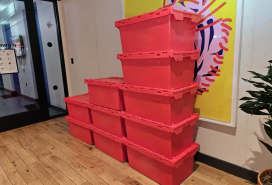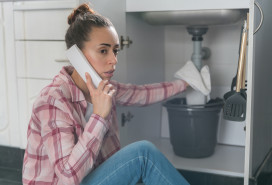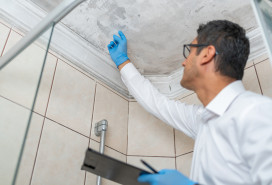7 fruits and vegetables you can grow in a NYC apartment
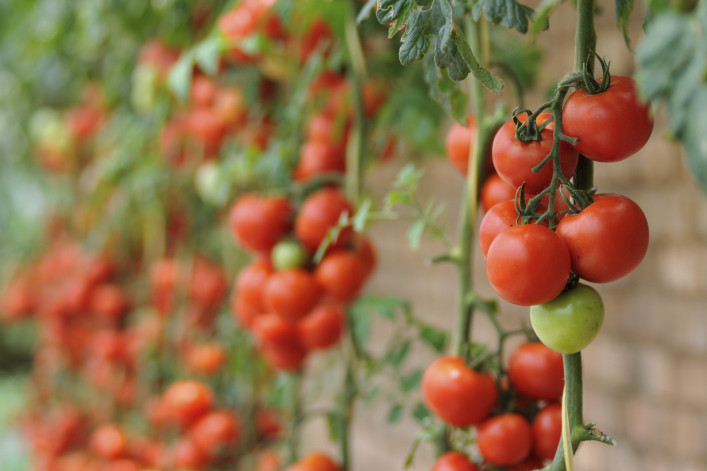
Similar to an apartment garden, it’s important to have the right soil for your indoor garden. The best ones are rich in nutrients and drain to allow the roots the proper amount of moisture. For more on the basics, click here.
We’ve rounded up several kinds of fruits, vegetables and herbs that not only grow indoors, but thrive. If you don’t have a sun-drenched apartment (don’t worry, it’s not a deal-breaker), growing lights, which create artificial sunlight for plants, are a fantastic option. These vegetables are good for their heartiness — most can grow easily once you add only a little more warmth or light, and they’re delightfully compact, requiring only the smallest of windowsills, small pots, and sunny corners of your apartment.
And for those who love shortcuts, most floral shops sell dwarf varieties of fruiting trees, meaning you can feast on fruit within days of starting your garden.
Now you have no excuse not to eat your veggies.

A small avocado tree cvinas
AVOCADO
True, you can grow an avocado plant from the tasty stone fruit’s pit, but if you’re hoping for your own ripe avocados, it’s best to buy a small tree and go from there. The plant requires year-round light (hence why they grow so well in California) so be sure to place the plant by a window with plenty of sunlight.
Maintenance for the tree is fairly straight-forward — simply make sure to prune only when necessary, and make sure to water it about once a week.
Once the tree starts to bear fruit, you still need to let the avocado ripen for a few days or even weeks.
If you choose to grow from a seed, suspend the seed over a glass of warm water using toothpicks and let the roots grow downwards. Make sure to water frequently. After roots grow within a week or two transfer to a larger pot with soil.
TOMATOES
There’s nothing quite like a juicy, vine-ripened tomato, and it only tastes better if grown by you. The best way to grow healthy tomatoes is to give them 12 to 18 hours of sunlight, which may mean investing in grow lights. Cherry and plum varieties work best indoors, but all you need for a planter is a simple pot around 6” deep. They also do well in temperatures no lower than 66 degrees.
GREEN BEANS
Though you may have hated this particular vegetable growing up, fresh green beans are healthy and extremely easy to grow. Give the beans a loose, sandy soil rich with fertilizer and pot it in a long, narrow planter that allows the beans to take root and for excess water to drain. It should receive around six hours of sunlight a day, but there’s little extra care beyond its setup and keeping soil continually moist.
CARROTS
These root vegetables would also do well in a sunny New York City window. The key to a delicious carrot crop is in the soil (it should be rich in nutrients and soft so the carrots can grow). Plant seeds about 6 inches apart in a narrow but deep planter. Again, it’s important to keep soil moist to allow the carrots to germinate.

An indoor lemon tree. abbyef
CITRUS FRUITS
Citrus is a good choice for indoor fruiting gardens, with the calamondin orange tree a particularly good choice for beginners, thanks to its hearty nature. It’s best to start with a young dwarf tree from a gardening store (bonus point: It comes in its own pot) and make sure to allow drainage in its new pot (you can get one with holes in the bottom and place it on a large dish or line the bottom with rocks.
With proper care, the tree should produce edible fruit within 6 to 12 months. You can also try lemons, limes, and mandarin oranges.

STRAWBERRIES
Hydroponics (growing plants with nutrient-rich water without soil) is a popular option for many plants, but small kits like the one shown above make strawberries one of the easiest fruits to grow indoors. The kit keeps the fruit plants constantly fed, with plenty of artificial sunlight (and strawberries are ready to eat without needing to wash them!). Because you grow it in the kit, not additional container is necessary.

HERBS
Who says that tech and gardening are like oil and water? Innovative brands like Click ‘n Grow allow you to grow three different herbs in one go. Better yet, the incubator does much of the legwork for you, keeping the soil moist and the plants, well-lit. We love herbs like basil, thyme, and rosemary for their versatility in the kitchen.
Related:
How to start a garden in event the smallest NYC apartment
Indoor gardening tips for the plant assassins among us
7 ways to grow a (little) garden in your apartment
A garden for even the most space-challenged apartment
What kind of plants grow best in your space? Find out









